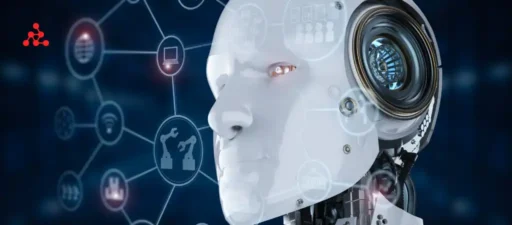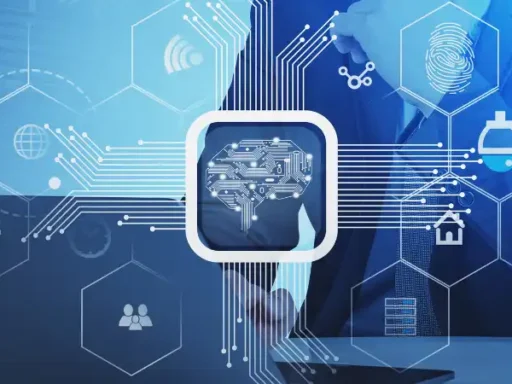In the modern world, robotics is at the forefront of technological innovation, transforming industries and daily life with unprecedented capabilities. The term “robotics” often conjures images of humanoid machines, but the field is vast and varied, encompassing a range of technologies designed to automate tasks, improve efficiency, and enhance human capabilities.
In this guide, we will explore the four primary types of robotics: industrial robots, service robots, medical robots, and military robots. Each category represents a distinct area of application with unique characteristics, functions, and challenges. Understanding these types of robotics is essential for grasping how they contribute to different sectors and the impact they have on society.
The Four Types of Robotics
1. Industrial Robots
Industrial robots are among the most common and widely recognized types of robotics. They are primarily used in manufacturing environments, where they perform repetitive tasks with high precision and efficiency. These robots are designed to operate in controlled environments like factories, where they handle tasks such as assembly, welding, painting, and packaging.
Types of Industrial Robots
Industrial robots can be categorized into several types based on their configuration and the tasks they perform:
-
Articulated Robots
These robots have rotary joints and can range from simple two-joint robots to complex systems with ten or more interacting joints. Their flexibility allows them to perform a wide variety of tasks, including assembly and material handling.
-
SCARA Robots (Selective Compliance Assembly Robot Arm)
SCARA robots are known for their high speed and precision in tasks such as pick-and-place, assembly, and packaging. They have a rigid vertical axis, making them ideal for tasks that require a combination of speed and accuracy.
-
Cartesian Robots
Also known as gantry robots, these operate on three linear axes (X, Y, and Z) and are often used for tasks that require linear movement, such as CNC machining and 3D printing.
-
Cylindrical Robots
These robots have at least one rotary joint at the base and a prismatic joint to connect the links. They are used in applications such as machine loading and unloading, welding, and material handling.
-
Delta Robots
Characterized by their spider-like arms, Delta robots are used for high-speed pick-and-place tasks in industries such as food processing and pharmaceuticals.
Applications and Benefits
The primary advantage of industrial robots is their ability to operate continuously without fatigue, ensuring consistent output and reducing human error. They are essential in industries such as automotive, electronics, and consumer goods, where they help increase production speed and maintain high quality standards.
Industrial robots also play a crucial role in reducing labor costs and improving workplace safety by taking over hazardous tasks that could be dangerous for human workers.
Challenges
Despite their advantages, industrial robots face challenges such as high initial costs, the need for specialized programming and maintenance, and limited flexibility in dynamic environments. Additionally, the rise of automation has sparked debates over job displacement and the need for reskilling the workforce.
2. Service Robots
Service robots are designed to assist humans in non-industrial environments, such as homes, offices, and public spaces. Unlike industrial robots, which operate in controlled environments, service robots interact directly with people and their surroundings, making them more adaptable and user-friendly.
Types of Service Robots
Service robots can be broadly categorized into two groups: personal service robots and professional service robots.
-
Personal Service Robots
These robots are designed for personal use and assist with tasks in the home or daily life. Examples include robotic vacuum cleaners, lawn mowers, and social robots like Amazon’s Alexa or SoftBank’s Pepper.
-
Professional Service Robots
These are used in commercial settings and public services. Examples include delivery robots, security robots, and robots used in hospitality, such as those that assist with customer service or food delivery.
Applications and Benefits
Service robots have a wide range of applications. In healthcare, for example, robots like robotic exoskeletons assist people with mobility issues, while social robots provide companionship and cognitive support to the elderly. In the retail industry, robots are used for inventory management, customer service, and even in-store navigation.
One of the key benefits of service robots is their ability to perform tasks that improve convenience and efficiency in daily life. They can work alongside humans, providing assistance in various tasks while freeing up time for more complex activities.
Challenges
Service robots face challenges such as the need for advanced artificial intelligence (AI) to navigate and interact in unstructured environments. Ensuring safety and privacy in human-robot interactions is also a significant concern, particularly in home and healthcare settings. Additionally, the development of intuitive user interfaces that make these robots accessible to non-experts is an ongoing challenge.
3. Medical Robots
Medical robots represent a rapidly growing area of robotics, with applications in surgery, rehabilitation, and patient care. These robots are designed to enhance the capabilities of healthcare professionals, improve patient outcomes, and reduce the risk of human error.
Types of Medical Robots
Medical robots can be classified into several categories based on their functions:
-
Surgical Robots
These robots assist surgeons in performing complex procedures with greater precision and control. The da Vinci Surgical System is one of the most well-known examples, allowing surgeons to perform minimally invasive surgeries with enhanced dexterity and accuracy.
-
Rehabilitation Robots
These robots help patients recover from injuries or surgeries by assisting with physical therapy exercises. They are used to improve mobility, strength, and coordination in patients with conditions such as stroke or spinal cord injuries.
-
Telepresence Robots
These robots enable healthcare professionals to remotely interact with patients, providing care and consultation from a distance. This is particularly useful in rural or underserved areas where access to healthcare is limited.
-
Hospital Robots
These robots are used within hospitals to perform tasks such as transporting supplies, disinfecting rooms, and assisting with patient monitoring. They help reduce the workload on hospital staff and improve the efficiency of healthcare services.
Applications and Benefits
Medical robots offer numerous benefits, including increased precision in surgical procedures, reduced recovery times for patients, and improved access to healthcare services. They also help mitigate the risks associated with human error, particularly in high-stakes environments like operating rooms.
In rehabilitation, robots provide consistent and repeatable therapy sessions, which can lead to better outcomes for patients. Telepresence robots, meanwhile, help bridge the gap between patients and healthcare providers, ensuring that medical care is accessible even in remote locations.
Challenges
The development and implementation of medical robots face several challenges, including high costs, regulatory hurdles, and the need for extensive training for healthcare professionals. Additionally, ethical concerns arise when considering the potential for over-reliance on robots in critical care situations and the need to maintain the human element in patient care.
4. Military Robots
Military robots are designed for use in defense and security applications. These robots are deployed in various roles, including reconnaissance, bomb disposal, and combat, where they help reduce the risk to human soldiers and improve mission effectiveness.
Types of Military Robots
Military robots can be classified into several categories based on their functions:
-
Unmanned Aerial Vehicles (UAVs)
Also known as drones, UAVs are used for surveillance, reconnaissance, and targeted strikes. They can operate autonomously or be remotely piloted and are a critical component of modern military operations.
-
Unmanned Ground Vehicles (UGVs)
These robots are used for tasks such as bomb disposal, reconnaissance, and logistics support. UGVs can navigate challenging terrain and perform dangerous tasks, reducing the risk to human soldiers.
-
Autonomous Underwater Vehicles (AUVs)
These robots are used for underwater reconnaissance, mine detection, and other naval applications. AUVs can operate autonomously, gathering data and performing missions in environments that are hazardous for human divers.
-
Robotic Exoskeletons
These wearable robots are designed to enhance the physical capabilities of soldiers, allowing them to carry heavier loads and move more quickly and efficiently. They can also be used in rehabilitation for injured soldiers.
Applications and Benefits
Military robots provide significant advantages in terms of safety, efficiency, and effectiveness. UAVs, for example, allow for real-time surveillance and precision strikes without putting human pilots at risk. UGVs can safely dispose of explosives or carry out reconnaissance missions in hostile environments.
Robotic exoskeletons enhance the physical capabilities of soldiers, enabling them to perform tasks that would otherwise be physically demanding or impossible. This not only improves mission outcomes but also reduces the risk of injury to soldiers.
Challenges
Military robots face challenges such as ethical concerns regarding the use of autonomous weapons, the potential for misuse or hacking, and the high costs associated with developing and maintaining these technologies. Additionally, the integration of robots into military operations requires careful consideration of the rules of engagement and the potential impact on international law.
You Might Be Interested In
- What Are The Disadvantages Of Robotic Knee Surgery?
- What Are The Two Types Of Supervised Learning?
- How Have Robots Changed The Way We Work?
- Is CNN Supervised Or Unsupervised?
- How Can Robots Help Humans?
Conclusion
The four types of robotics—industrial, service, medical, and military—each represent a unique and essential aspect of the broader field of robotics. Industrial robots are the backbone of modern manufacturing, driving efficiency and precision in production processes.
Service robots enhance our daily lives by providing assistance in homes, offices, and public spaces. Medical robots are revolutionizing healthcare by improving surgical outcomes, rehabilitation, and patient care. Military robots, meanwhile, are reshaping defense strategies by enhancing the safety and effectiveness of military operations.
Understanding these types of robotics is crucial as they continue to evolve and integrate into various aspects of our lives. The future of robotics holds the promise of even greater advancements, with the potential to address complex challenges and improve the quality of life across the globe. However, it is also essential to navigate the ethical, economic, and social implications that come with the increasing presence of robots in our world.
As we move forward, the ongoing development and application of robotics will require careful consideration of their impact on society, the economy, and the environment. By understanding the different types of robotics and their respective roles, we can better prepare for a future where humans and robots work together in harmony to achieve common goals.
FAQs
What are the four types of robotics?
The four types of robotics include industrial robots, service robots, medical robots, and military robots. Industrial robots are primarily used in manufacturing and production settings, where they perform tasks such as assembly, welding, and packaging with high precision and efficiency. These robots are essential in industries like automotive and electronics, where consistency and speed are crucial.
Service robots, on the other hand, are designed to assist humans in non-industrial environments such as homes, offices, and public spaces. They come in various forms, from robotic vacuum cleaners to social robots that interact with people and provide companionship. Medical robots are revolutionizing healthcare by aiding in surgery, rehabilitation, and patient care.
These robots enhance the precision of surgical procedures, assist in physical therapy, and even enable remote healthcare services through telepresence. Military robots are employed in defense and security roles, including reconnaissance, bomb disposal, and combat. These robots reduce the risk to human soldiers and improve the effectiveness of military operations.
What are industrial robots used for?
Industrial robots are utilized in manufacturing environments to perform repetitive tasks with high accuracy, speed, and efficiency. They are essential in industries such as automotive manufacturing, electronics, and consumer goods production, where they carry out tasks like assembly, welding, painting, and packaging.
The use of industrial robots in these settings helps to increase production rates, maintain consistent quality, and reduce labor costs. Additionally, industrial robots are capable of working continuously without fatigue, which significantly boosts productivity. These robots also play a critical role in enhancing workplace safety by taking over hazardous tasks that could be dangerous for human workers, such as handling toxic materials or operating in extreme conditions.
What are service robots and their applications?
Service robots are designed to assist humans in non-industrial environments, providing support in tasks that range from household chores to professional services. Personal service robots, like robotic vacuum cleaners and lawn mowers, are commonly found in homes, where they help with daily tasks, making life more convenient and freeing up time for other activities.
Professional service robots are used in commercial and public settings, such as hospitals, hotels, and retail stores. For example, in healthcare, robots assist with patient care, physical therapy, and even provide companionship to the elderly. In retail, service robots manage inventory, guide customers, and deliver goods.
The applications of service robots are diverse, and they are increasingly being integrated into various sectors to improve efficiency and enhance the quality of services provided.
How do medical robots enhance healthcare?
Medical robots are transforming the healthcare industry by enhancing the precision and effectiveness of medical procedures, improving patient outcomes, and reducing the risk of human error. Surgical robots, such as the da Vinci Surgical System, enable surgeons to perform minimally invasive procedures with greater control and accuracy, leading to faster recovery times for patients and fewer complications.
Rehabilitation robots assist patients in recovering from injuries or surgeries by providing consistent and repeatable physical therapy exercises, which can lead to improved mobility and quicker recovery. Telepresence robots allow healthcare professionals to remotely interact with patients, providing care and consultation from a distance, which is especially beneficial in rural or underserved areas.
Additionally, robots in hospitals perform tasks such as transporting supplies, disinfecting rooms, and monitoring patients, thereby improving the overall efficiency and quality of healthcare services.
What are the roles of military robots?
Military robots play a critical role in modern defense and security operations, where they are deployed to perform tasks that reduce the risk to human soldiers and enhance mission effectiveness. Unmanned Aerial Vehicles (UAVs), commonly known as drones, are used for surveillance, reconnaissance, and targeted strikes, providing real-time intelligence and precise targeting without putting pilots in harm’s way.
Unmanned Ground Vehicles (UGVs) are utilized for tasks such as bomb disposal, reconnaissance, and logistics support, operating in hazardous environments that would be too dangerous for human soldiers. Autonomous Underwater Vehicles (AUVs) conduct underwater reconnaissance and mine detection, performing missions in environments that are difficult or impossible for humans to navigate.
Robotic exoskeletons enhance the physical capabilities of soldiers, allowing them to carry heavier loads and move more efficiently, which is particularly useful in demanding combat situations. Overall, military robots significantly improve the safety, efficiency, and effectiveness of military operations, but their use also raises ethical and legal considerations that need to be carefully managed.







